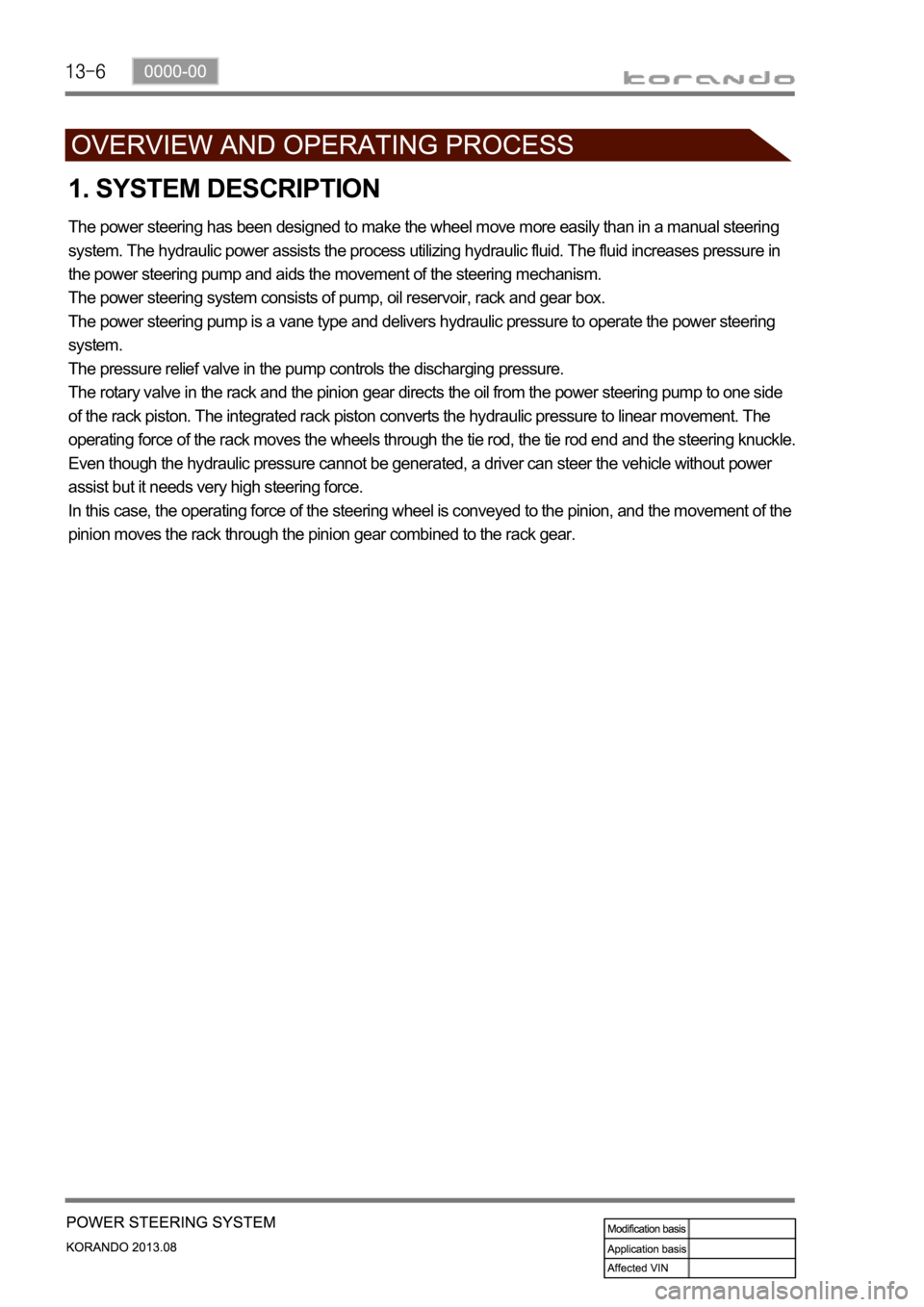Page 1118 of 1336
4) RISE (ABS is working) Mode
As the wheel speed increases, the inlet valve opens and the wheel's pressure increases due to the
master cylinder pressure. In addition, the pump circulates the oil in the low pressure chamber to the
wheel. As the hydraulic pressure to the wheel increases, the wheel speed will reduce. This operation
continues repetitively until there are no signs that the ABS HECU tends to lock the wheels. Since the
ABS hydraulic pressure control process takes place repeatedly for a short time, there may be some
vibration and noises at the brake pedal.
Solenoid valve Valve Open/Close Pump motor
Inlet valve - Normal open (NO) valve Open
ON
Outlet valve - Normal close (NC) valve Close
Page 1123 of 1336
3. ESP OFF switch
Located on the left side of
instrument panel.2. Steering wheel angle
sensor
Located on column shaft with
contact coil.1. HECU assembly
Located under the power
steering fluid reservoir and
contains the pressure sensor.
2. COMPONENTS
4. Sensor cluster
Located on the floor under front
passenger seat.5. Wheel speed sensor
(4WD/2WD-front)
Located on knuckle. the
appearance of front sensor is
same with rear sensor.6. Rear wheel speed sensor
(2WD)
Located on knuckle. The
appearance is different from
that for 4WD.
Page 1139 of 1336
2) DUMP (ESP is working) Mode
The pressure decreases just before the wheel speed drops and the wheels are locked.
The inlet valve closes and the outlet valve opens as in the ABS HECU and the oil is gathered at the low
pressure chamber while no additional oil is being supplied. Then the pump operates to allow fast oil
drainage. The shuttle valve and the separation valve do not operate while decompression.
Page 1145 of 1336
0000-00
1. SPECIFICATION (HPS)
Component Item Specification
Steering wheel Type 3-spoke
Outside diameter
Number of revolutions 3.09 rotations
Heated wire Simple ON/OFF
Gear box Type Rack and pinion
Gear ratio 46.94
Rack stroke
Steering angle Inner
Outer
Wheel alignment Toe-in
Oil pump Type Vane (removable pump and reservoir)
Maximum pressure
Displacement
Pulley diameter
Steering column Tilting angle Up + 2.0 deg
Down - 3.0 deg
Lower shaft Type Ball slip
Steering oil Oil type S-PSF 3
Oil reservoir capacity
Change interval EU (Diesel): Check and add at every 20,000
km
GEN (Diesel, Gasoline): Check and add at
every 15,000 km
Turning capability Min. turning radius 5.35 m
Page 1148 of 1336

1. SYSTEM DESCRIPTION
The power steering has been designed to make the wheel move more easily than in a manual steering
system. The hydraulic power assists the process utilizing hydraulic fluid. The fluid increases pressure in
the power steering pump and aids the movement of the steering mechanism.
The power steering system consists of pump, oil reservoir, rack and gear box.
The power steering pump is a vane type and delivers hydraulic pressure to operate the power steering
system.
The pressure relief valve in the pump controls the discharging pressure.
The rotary valve in the rack and the pinion gear directs the oil from the power steering pump to one side
of the rack piston. The integrated rack piston converts the hydraulic pressure to linear movement. The
operating force of the rack moves the wheels through the tie rod, the tie rod end and the steering knuckle.
Even though the hydraulic pressure cannot be generated, a driver can steer the vehicle without power
assist but it needs very high steering force.
In this case, the operating force of the steering wheel is conveyed to the pinion, and the movement of the
pinion moves the rack through the pinion gear combined to the rack gear.